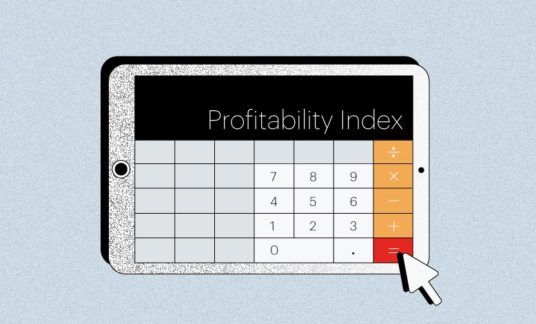Whether you’re running a small business or a large organization, there’s never a shortage of work to do. It can become overwhelming and wear you down.
However, it doesn’t have to be that way. We’re here to share the insider secrets that top business leaders use for prioritizing tasks, staying organized and remaining focused on their most important tasks.
These different strategies take similar, but slightly different approaches to create a formal system for prioritizing your work and developing your prioritization skills. Try a few and see what works best for you.
Decision-Making Models
Let’s start with a couple of decision-making models to help you sort your priorities.
The Eisenhower Matrix
Dwight D. Eisenhower was perhaps best known for planning and supervising the successful invasion of Normandy in World War II before becoming President. What you may not know is that his thoughts on decision making have become a staple of business prioritization strategies.
“What is important is seldom urgent, and what is urgent is seldom important.” – Dwight D. Eisenhower
Inspired by his words, the Eisenhower Matrix (also known as the Urgent-Important Matrix) is a simple tool that helps with managing competing demands. It’s a 2 x 2 matrix dividing tasks based on urgency and importance. Where prioritizing tasks, you place items into their appropriate boxes which helps you determine what to do.
For example:
- If a task is urgent and important: Do it immediately
- If a task is important, but not urgent: Plan to do it later
- If a task is urgent, but not important: Delegate it to someone else
- If a task isn’t urgent and not important: Eliminate it.
This decision-making tool was the framework for one of businessman and author Stephen Covey’s matrix tools.

The Business Value-Based Prioritization Model
How do CEOs stay organized? Many of them use a business value-based prioritization system. This comes from a popular project management model that has been adopted by software developers for an agile framework they call Scrum.
It works in large companies and helps with the time management small business owners need as well.
In this case, you are prioritizing tasks by their business value by answering 2 questions:
- What are the benefits of doing a specific task?
- What are the risks of not doing it?
By positioning it as a risk-reward scenario, you can often prioritize tasks more easily. Adding additional features or options for customers may be a good thing to do, but will it improve sales or user adoption? If you don’t add them is there a risk that customers will go to competitors instead to have their needs filled?
List Making
Sometimes, it’s as simple as making a list and putting them in order. Unfortunately, that list can increase over time and become huge. When it does, you need an easy way to figure out the most important.
The Ivy Lee Method
The Ivy Lee method, more than 100 years old, forces you to prioritize your goals.
- Lee suggested that at the end of every workday, you write down your 6 most important goals for the next day. By limiting the number to 6, you’ll make decisions on which goals are more important than others.
- Examine the list and prioritize tasks in order of importance.
- When your next business day starts, focus on the first task until it’s done.
- Work your way down the list until each task is finished.
- If any are left over at the end of the day, move them to the following day.
By repeating this every day, you are constantly making decisions on work priorities. As new tasks arise, you are constantly weighing them against what’s currently on the list.
The 5/25 Strategy
Billionaire Warren Buffett is often cited for using a slightly different approach using a 3-step exercise to help you prioritize. An employee that worked with Buffett for several years said he was given this advice:
- Write down your top 25 goals or tasks
- Review the list and tag the top 5 goals.
- This creates an “A” list of your 5 top priorities and a “B” list.
You might think the strategy here would be to focus on the A list and do tasks on the B lists in your downtime or intermittently. While not as important, they are still things you want to accomplish. As the story goes, Buffett would disagree. His advice would be to only focus on the top five. Avoid everything else on your list until you’ve completed your top 5.
While Buffett has said he never gave that advice and it isn’t the way he does business, others swear by its use.

Limit Distractions and Avoid Multitasking
About now you may be thinking that you have too many urgent and important goals to limit them to a handful. Besides, you may think, you’re adept at multitasking.
Limit Distractions
Successful business leaders reject each of these arguments. They know that to accomplish the most important tasks, they need to limit distractions. Top leaders tend to focus on working the things at the top of the list by prioritizing a single goal.
Research shows that subordinates continue to try and tackle multiple priorities at the same time by multitasking. They’re often afraid to make value decisions on ranking priorities, so they try to take them all on. It’s a mistake. When juggling multiple priorities, research shows that it leads to a decline in overall performance because the most important tasks don’t get the full attention they deserve and may not be done at high standards.
Avoid Multitasking
While we all like to think of ourselves as great multitaskers, the reality is we aren’t.
Let that sink in for a moment. Researchers today say we don’t multitask at all. What we really do is constantly switch our focus from one thing to another. Each time our brains are forced to think about a new task, we’re sapping our energy and taking away from the task at hand. In test after test, researchers found that multitasking takes more time to get tasks completed than when you focus on one thing at a time and work uninterrupted. Switching between tasks and priorities throughout the day can cost us 40% of our productivity.
Not only that, neuroscientists find that multi-tasking is addictive and potentially damaging to our brains. Because you get instant gratification for completing tasks, it can create a feedback loop that makes you believe you’re producing at a higher rate because you’re accomplishing things. MRI brain scans show that there’s a cognitive cost. People trying to multitask often are left with less brain density in certain functional areas.
Besides the science of it all, doesn’t it just make logical sense to focus on your top priorities and let other things go until you accomplish the most important things?
Even if you have a laundry list of things to do, the best strategy is to work on one until it’s complete and finish it before moving on to the next. So, ignore your email until you finish your task at hand. The more important the goal, the more focused you need to be.
Break Goals Down into Actionable Steps
When you have a list of big goals in front of you, it can become overwhelming. It helps to break each task down into more manageable sub-tasks. For example, let’s say you have a personal goal to save $5,000 by the end of the year. It can feel unattainable. However, setting aside $200 from each paycheck may seem manageable.
You may also find that even with your most urgent and important goals, there are steps along the way that you can delegate to others while you work on your top goals.
Here is a work priority example showing how this might work.
Let’s say your goal is for your sales team to close five more deals each month. From your experience, you know that it will take 10 presentations to close five deals. Before you can make those presentations, your team will need to do 20 needs assessment meetings, and it takes 5 cold calls before you can get in front of a customer in the first place. That adds up fast. To close five deals in this scenario, it takes 100 cold calls every month to get those five deals.
It can feel overwhelming. However, if you have a team of ten salespeople, each of them has to make roughly three calls a week to make it happen. That sounds doable.
By breaking big goals into smaller pieces, and setting priorities for yourself and others, you can relieve some of the stress.
Prioritizing Tasks
When you prioritize tasks and complete the big ones, it can create a significant sense of accomplishment. This can be addicting, too, but in a more positive — and valuable — way. When you do finish that big task, take a breath and enjoy a moment of satisfaction before you dive right into the next. You need a mental cleansing to move to the next priority.
One word of advice in all of this, however. Remember that plans do change. Interruptions happen. New crises emergence. One call can throw your planning out the window.
Be realistic about what you can accomplish and give yourself a break. You can always reprioritize.











